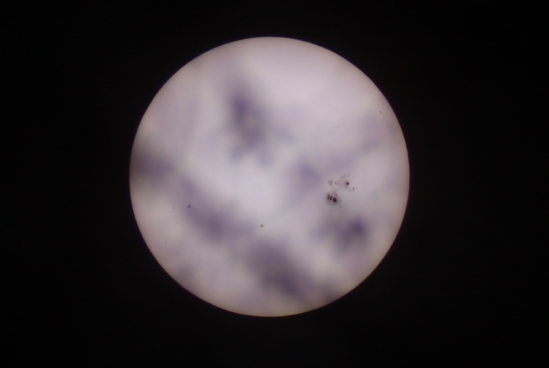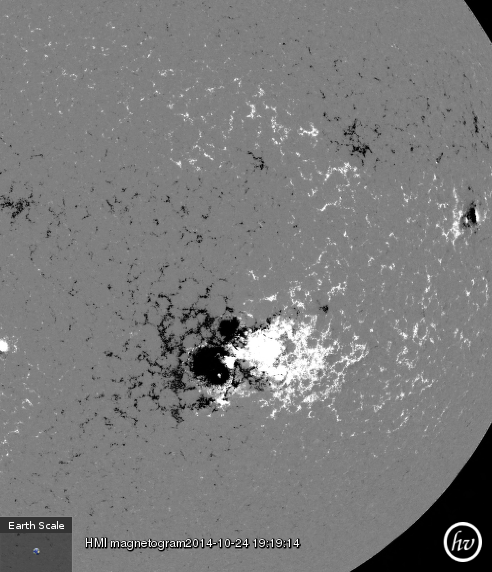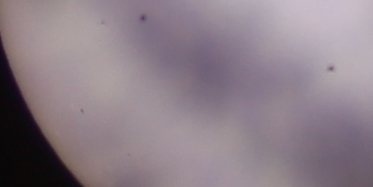Through a rare break in the clouds, I have been able to snap a photo of a true giant. Here is Helios in all its glory.
There were scattered clouds, but the shadows on the disk are due to trees in the foreground (out of focus). Other blotches on the disk are more distant, i.e. they are on the solar surface, the photosphere:
The extent of this sunspot group is much bigger than Earth. We can clearly see the darkest core (umbra) and the lighter boundary (penumbra) of the sunspot. Magnetic field lines penetrate the photosphere at the locations of the sunspots, aligning and cooling the plasma which then appears darker against the hotter surface. Sharper views are possible with a bit more effort where we can see the granules produced by convection, and the way finer details in the penumbra align following the magnetic field lines, like iron filings along the field lines of a magnet. The sunspot evolves as the Sun’s rotation carries it across the disk. NASA’s Solar Dynamics Observatory (SDO) have pretty awesome views of it, and in multiple wavelengths. We live in a time when such content is only a few clicks away.
A magnetogram of the complex, courtesy of SDO:
Other, smaller spots can be noticed:
An interesting project would be to follow the evolution of the larger spot before it disappears from view. Of course, SDO will have such a movie archived in due time. The wonders of the global web…
Only a simple mylar filter was placed in front of the objective lens of the small refractor I used, and a DSLR camera was placed in the prime focus for this shot (1/800 s at ISO 100).




